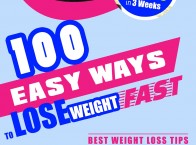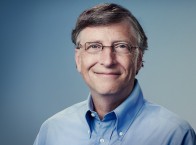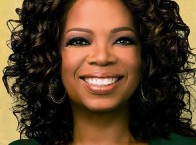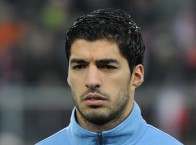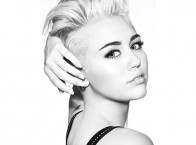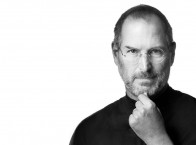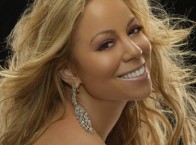Bruce Springsteen is best known for his work with his E Street Band. Learn additional 49 things about Springsteen.
1. Bruce Frederick Joseph Springsteen is an American musician, singer, songwriter and humanitarian.
2. Bruce Springsteen is best known for his work with his E Street Band.
3. Nicknamed "The Boss", Springsteen is widely known for his brand of poetic lyrics, Americana working-class and sometimes political sentiments centered on his native New Jersey, his distinctive voice and his lengthy and energetic stage performances, with concerts from the 1970s to the present decade running over three hours in length.
4. Springsteen's recordings have included both commercially accessible rock albums and more somber folk-oriented works.
5. His most successful studio albums, Born in the U.S.A. and Born to Run, showcase a talent for finding grandeur in the struggles of daily American life; he has sold more than 64 million albums in the United States and more than 120 million records worldwide, making him one of the world's best-selling artists of all time.
6. Bruce Springsteen has earned numerous awards for his work, including 20 Grammy Awards, two Golden Globes and an Academy Award as well as being inducted into both the Songwriters Hall of Fame and the Rock and Roll Hall of Fame in 1999.
7. Bruce Springsteen was born on September 23, 1949, at Monmouth Medical Center in Long Branch, New Jersey.
8. Bruce Springsteen was brought home from the hospital to Freehold Borough where he spent his childhood.
9. Bruce Springsteen lived on South Street and attended Freehold Borough High School.
10. His father, Douglas Frederick Springsteen, was of Dutch and Irish ancestry and worked as a bus driver, among other vocations, although he was mostly unemployed.
11. Bruce Springsteen has said his mother, Adele Ann (née Zerilli), was the main breadwinner.
12. His mother was a legal secretary and was of Italian ancestry.
13. His maternal grandfather was born in Vico Equense, a town near Naples.
14. He has two younger sisters, Virginia and Pamela. Pamela had a brief film career, but left acting to pursue still photography full-time; she took photos for his Human Touch, Lucky Town and The Ghost of Tom Joad albums.
15. Raised a Roman Catholic, Springsteen attended the St. Rose of Lima Catholic school in Freehold Borough, where he was at odds with the nuns and rejected the strictures imposed upon him, even though some of his later music reflects a Catholic ethos and included a few rock-influenced, traditional Irish-Catholic hymns.
16. In a 2012 interview, he explained that it was his Catholic upbringing rather than political ideology that most influenced his music.
17. Bruce Springsteen noted in the interview that his faith had given him a "very active spiritual life," although he joked that this "made it very difficult sexually." He added: "Once a Catholic, always a Catholic."
18. In ninth grade, he transferred to the public Freehold Regional High School, but did not fit in there either. Former teachers have said he was a "loner, who wanted nothing more than to play his guitar."
19. Bruce Springsteen completed high school, but felt so uncomfortable that he skipped his own graduation ceremony.
20. Bruce Springsteen briefly attended Ocean County College, but dropped out.
21. Bruce Springsteen had been inspired to take up music at the age of seven after seeing Elvis Presley on The Ed Sullivan Show in 1956 and growing up hearing fellow New Jersey singer, Frank Sinatra, on the radio.
22. Sinatra also inspired Springsteen's style of songwriting, which was developed in his youth after his mother bought him his first guitar for $18.
23. 1964 was also important for Springsteen, having seen The Beatles' appearance on The Ed Sullivan Show.
24. Thereafter he started playing for audiences, first at a trailer park on New Jersey Route 34 and then at a local Elks Lodge.
25. In 1965, Springsteen's mother took out a loan to buy her 16-year-old son a $60 Kent guitar, an act he subsequently memorialized in his song "The Wish".
26. In the same year, he went to the house of Tex and Marion Vinyard, who sponsored young bands in town. They helped him become the lead guitarist and subsequently the lead singer of The Castiles.
27. The Castiles recorded two original songs at a public recording studio in Brick Township and played a variety of venues, including Cafe Wha? in Greenwich Village. Marin Vinyard has said that she believed the young Springsteen when he promised he would make it big.
28. Called for induction when he was 18, Springsteen failed his physical examination and did not serve in Vietnam.
29. In an interview in Rolling Stone magazine in 1984, he said, "When I got on the bus to go take my physical, I thought one thing: I ain't goin'." He had suffered a concussion in a motorcycle accident when he was 17, and this together with his "crazy" behavior at induction and not taking the tests was enough to get him a 4F.
30. In the late 1960s, Springsteen performed briefly in a power trio known as Earth, playing in clubs in New Jersey.
31. Bruce Springsteen acquired the nickname "The Boss" during this period as when he played club gigs with a band he took on the task of collecting the band's nightly pay and distributing it amongst his bandmates.
32. Bruce Springsteen is not fond of this nickname, due to his dislike of bosses, but seems to have since given it a tacit acceptance.
33. Previously he had the nickname "Doctor".
34. From 1969 through early 1971, Springsteen performed with Steel Mill, which also featured Danny Federici, Vini Lopez, Vinnie Roslin and later Steve Van Zandt and Robbin Thompson. They went on to play the mid-Atlantic college circuit, and also briefly in California.
35. Other acts followed over the next two years, as Springsteen sought to shape a unique and genuine musical and lyrical style: Dr. Zoom & the Sonic Boom (early- to mid-1971), Sundance Blues Band (mid-1971), and the Bruce Springsteen Band (mid-1971 to mid-1972).
36. Even after Springsteen gained international acclaim, his New Jersey roots showed through in his music, and he often praised "the great state of New Jersey" in his live shows.
37. Drawing on his extensive local appeal, he routinely sold out consecutive nights in major New Jersey, Philadelphia and New York venues.
38. Springsteen signed a record deal with Columbia Records in 1972 with the help of John Hammond, who had signed Bob Dylan to the same label a decade earlier.
39. Because of Springsteen's lyrical poeticism and folk rock-rooted music exemplified on tracks like "Blinded by the Light" and "For You", as well as the Columbia and Hammond connections, critics initially compared Springsteen to Bob Dylan.
40. On August 13, 1975, Springsteen and the E Street Band began a five-night, 10-show stand at New York's Bottom Line club. The engagement attracted major media attention and was broadcast live on WNEW-FM.
41. By the late 1970s, Bruce Springsteen had earned a reputation in the pop world as a songwriter whose material could provide hits for other bands.
42. Bruce Springsteen is probably best known for his album Born in the U.S.A. (1984), which sold 15 million copies in the U.S., 30 million worldwide, and became one of the best-selling albums of all time with seven singles hitting the Top 10. The title track was a bitter commentary on the treatment of Vietnam veterans, some of whom were Springsteen's friends and bandmates.
43. During the Born in the U.S.A. Tour, Springsteen met actress Julianne Phillips, whom he would marry in 1985.
44. During the European leg in 1988, Springsteen's relationship with backup singer Patti Scialfa became public. Phillips and Springsteen filed for divorce in 1988.
45. Later in 1988, Springsteen headlined the worldwide Human Rights Now! tour for Amnesty International.
46. In late 1989 he dissolved the E Street Band, and he and Scialfa relocated to California, marrying in 1991.
47. A multiple Grammy Award winner, Springsteen also won an Academy Award in 1994 for his song "Streets of Philadelphia", which appeared on the soundtrack to the film Philadelphia.
48. During the early 2000s, Springsteen became a visible advocate for the revitalization of Asbury Park, and played an annual series of winter holiday concerts there to benefit various local businesses, organizations, and causes. These shows were explicitly intended for the devoted fans, featuring numbers such as the E Street Shuffle outtake "Thundercrack", a rollicking group-participation song that would mystify casual Springsteen fans.
49. Bruce Springsteen draws on many musical influences from the reservoir of traditional American popular music, folk, blues and country.
50. Bruce Springsteen was honored with the 2013 MusiCares Person of the Year award in recognition of his creative accomplishments as well as his charitable work and philanthropic activities.
Source: Wikipedia.org

 Share on Facebook
Share on Facebook










